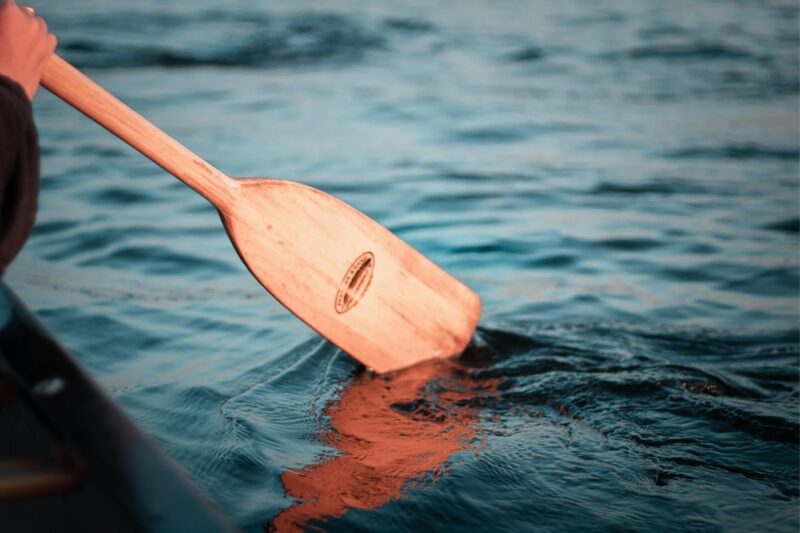River floats are a popular outdoor activity during the summer months throughout southwest Missouri. It’s an excellent way to make memories that last a lifetime with friends.
But every river-goer knowns that there are two essential paddle maneuvers needed to easily navigate the easy-flowing waters of the Elk River near Noel, Missouri, which are:
- Forward stroke
- Reverse stroke
Each stroke has a directional purpose in a river raft and is easy to complete, whether the river current is easy and slow or fast-moving with many rapids. By understanding how each of these paddle strokes work, you will be able to complete a successful river launch and navigate your way:
- Across a river
- downriver, or
- Upriver, if you choose
Successful Completion of Any Paddle Stroke Technique
For any paddle stroke to be completed successfully, it’s essential to know the three phases of a single stroke.
- Catch phase
- Power phase
- Recovery phase
By understanding these phases and how they work together, you can conserve energy for a more relaxing, good time on your river float trip.
The Catch Phase
The most critical phase out of the three is the catch phase. At this phase, a paddle blade makes first contact with the water. For the step to get completed successfully, the paddle blade must be fully plunged into the water up to the paddle throat before the power phase begins.
The Power Phase
Now the power phase, or power stroke, can begin. With all paddlers working in unison, this phase is the most efficient and effective way to move across the water.
Each paddler in the raft will hold on to the t-grip of the paddle using their inside hand coming cross-body to grasp the t-grip while the outside hand holds onto the shaft; in unison, the paddlers in the boat lean forward to drag the raft past the paddle(s). It is the in-unison work that gives this phase its name, power.
The Recovery Phase
The final phase of a stroke is the recovery phase when the paddle blade is lifted from the water and brought forward before plunging into the water to execute another stroke.
Forward Stroke for Maximum Efficiency
The forward stroke is the single most important paddle stroke in a river float. It propels a raft forward while keeping the boat in a straight line. When done correctly, it’s an incredibly efficient technique that saves you energy and keeps your raft moving swiftly.
Reverse Stroke for Directional Control
The reverse paddle stroke, sometimes called the back stroke, is an essential technique for river rafting and other river sports. It gives you maximum control over your raft’s direction. The method involves paddling in a backward direction while facing forward, which helps you to make quick turns and navigate through narrow passages.
Book A River Float Today
Booking a river float with Lazy Days Resort is easy. If you have specific dates in mind, you can check all the available dates through their online booking system for floats down:
The resort is situated between Pineville and Noel, Missouri. Getting to Lazy Days Resort is a short one-minute drive southwest of Interstate 49. Take exit 5 at mile marker 6.
If you have a minute or two, read what our past guests had to say about their stays.
